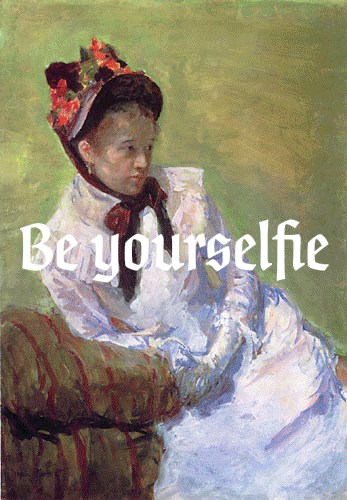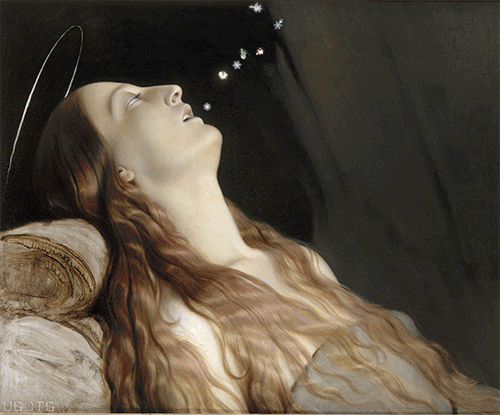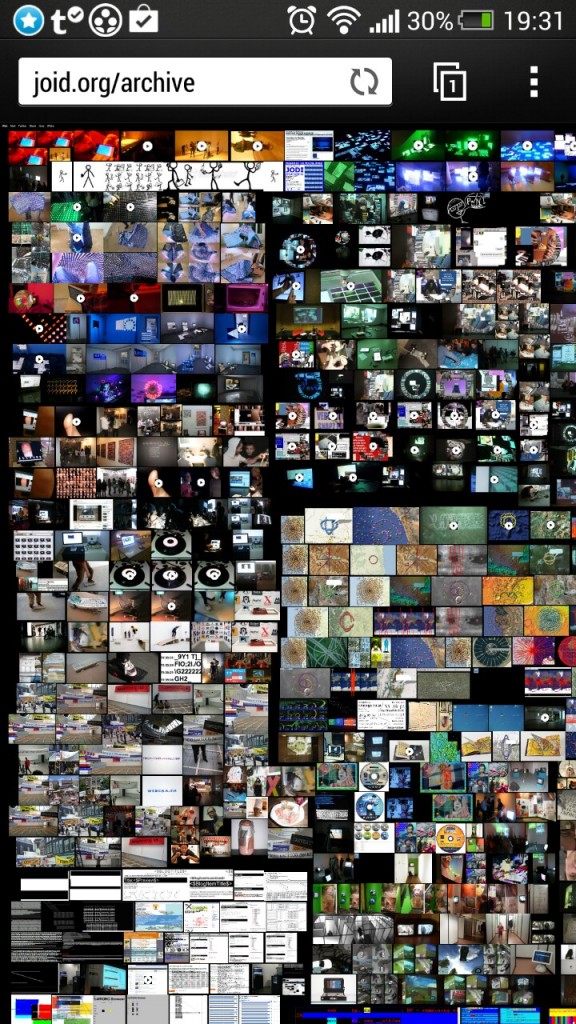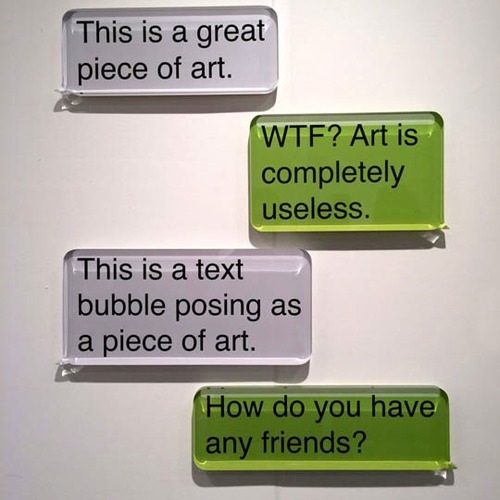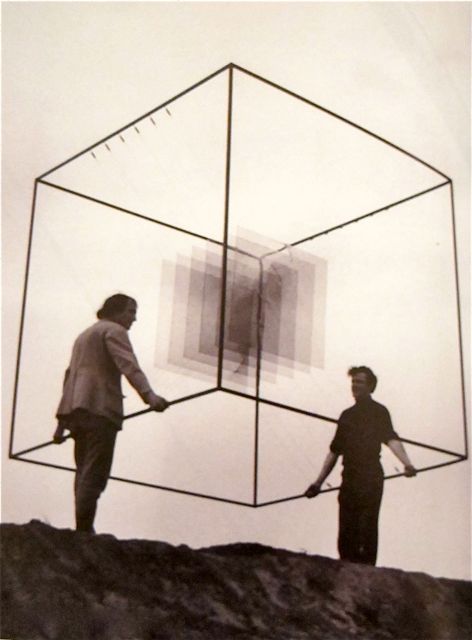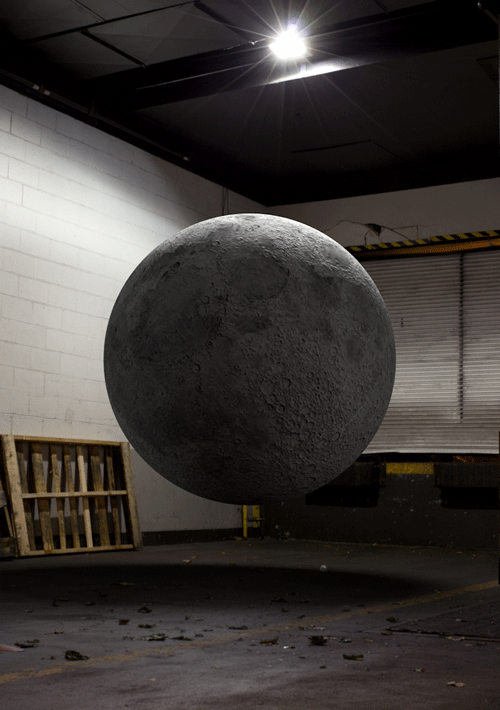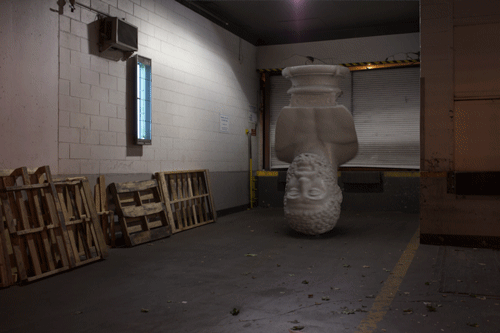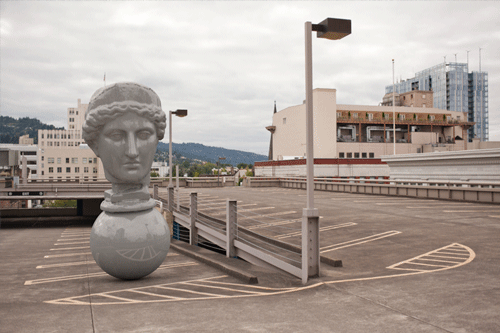[via kottke]
A Hole in Space
A Hole in Space LA-NY, 1980 – Artists Kit Galloway and Sherrie Rabinowitz created a ‘hole in space,’ or what they described as a telecollaborative project that utilized satellites to stream true-to-life-scale video feeds between public spaces on either coast or large scale monitors, this was 30 some odd years before any of this became standard. The following is a video tape document of an unannounced, live two-way satellite transmission which took place between Los Angelese and New York city on November 12, 13 and 14, 1980 for two hours.
Material Paintings
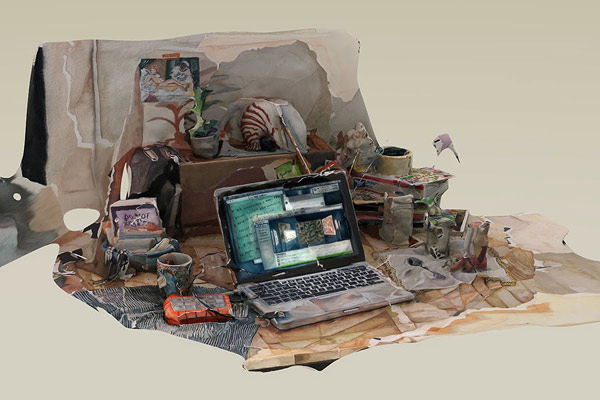
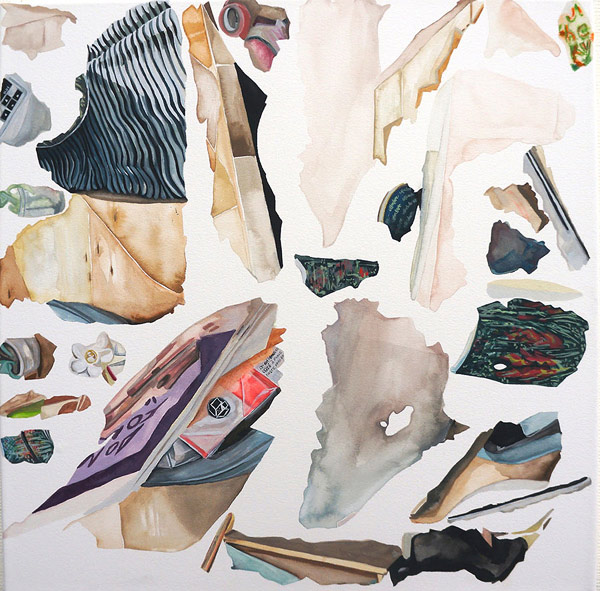
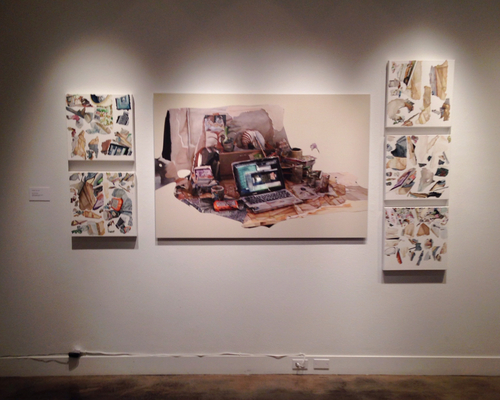
“Working both inside and outside of the software, the auratic labor of painting becomes an act of observance and intervention.”
Iconic History
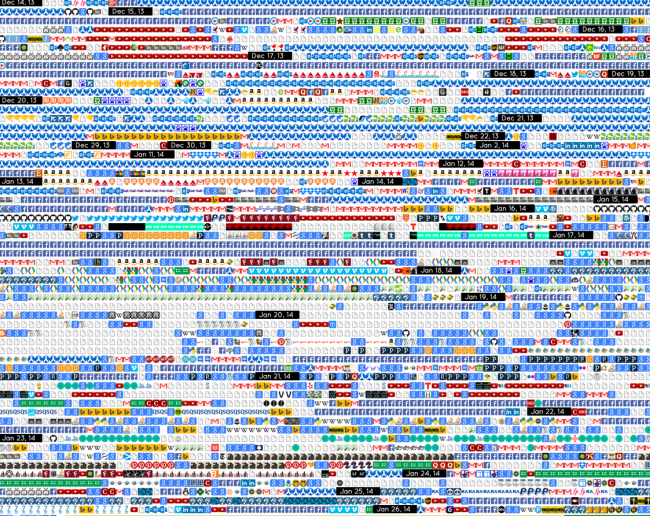
Iconic history is a Chrome extension by Shan Huang that visualizes your browser history as a favicon stack. It creates a favicon for each url visited, and compiles all icons into a huge sequence based on access time. See interactive demo here.
Be Yourselfie
Death in a gif
Animated Gif of the Day
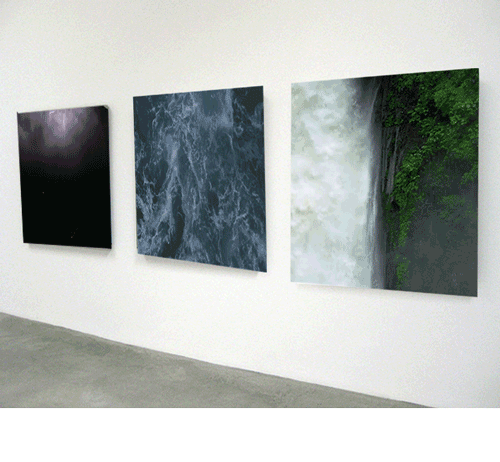
[via]
10 kg From the New Factory
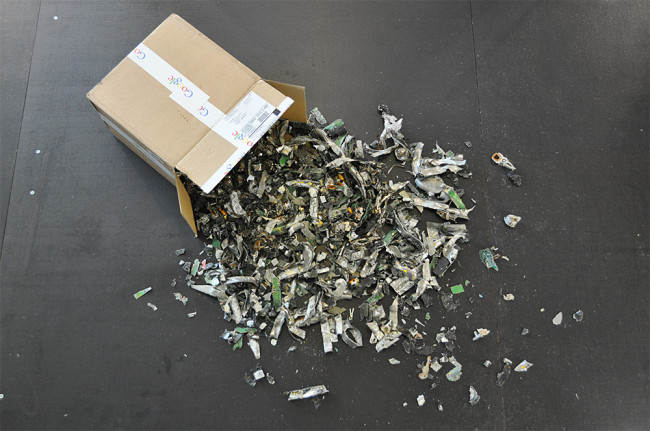
“Readymade art at the Transmediale Festival in Berlin by Sebastian Schmieg and Johannes P Osterhoff, featuring a box of destructed hard drives from one of Google’s data centers”…
[via]
Museoticon
![]()
[found here]
Lincoln 3D Scans
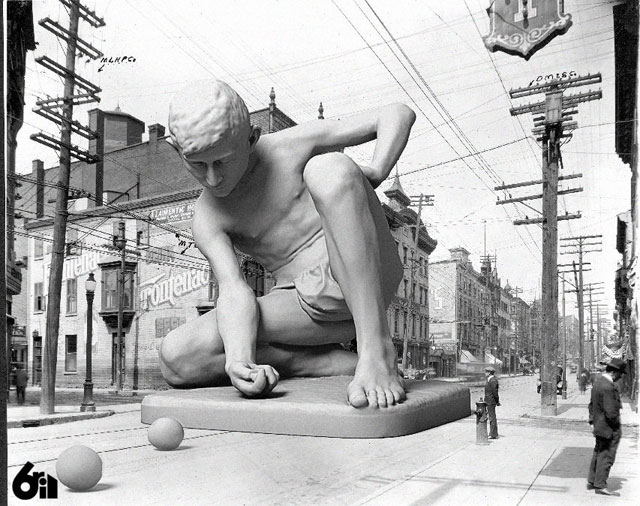
“For a project called “Lincoln 3D Scans,” artist Oliver Laric worked with the Collection Museum and Usher Gallery in Lincoln, UK, to make some of their pieces available in just that way. Laric sorted through their archives and chose dozens of objects to scan, from busts of Beethoven, Dante, and Einstein to pieces of furniture to a human pelvis bone. He then created 3D models of the objects, which he collected and published online. Each of the 52 pieces on Laric’s site — which is currently being highlighted as a “First Look” online exhibition by the New Museum — is presented in the form of a rotating GIF, stripped of color and looking like a kind of digital styrofoam version of itself. Underneath the GIFs are some basic identifying details and a button to download the scan as an STL file. Using that file, you can print the object yourself.”
[read more here]
Paintings in videogames
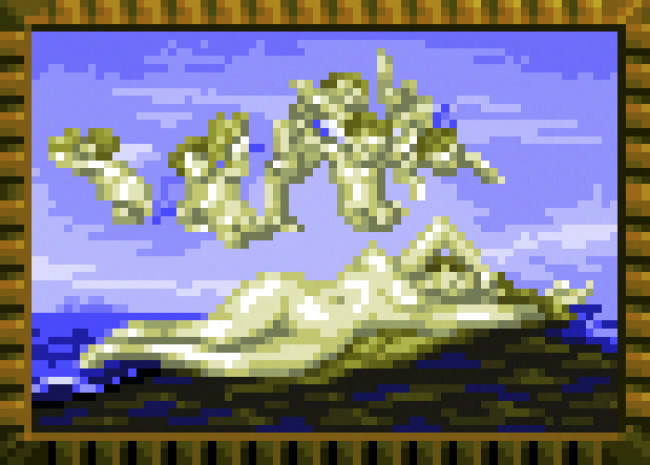
Jon Gourley has opened the Video Game Art Museum, a space dedicated to the paintings and art pieces strewn throughout the backgrounds of video games.
[via]
Total Jodi
Artomat
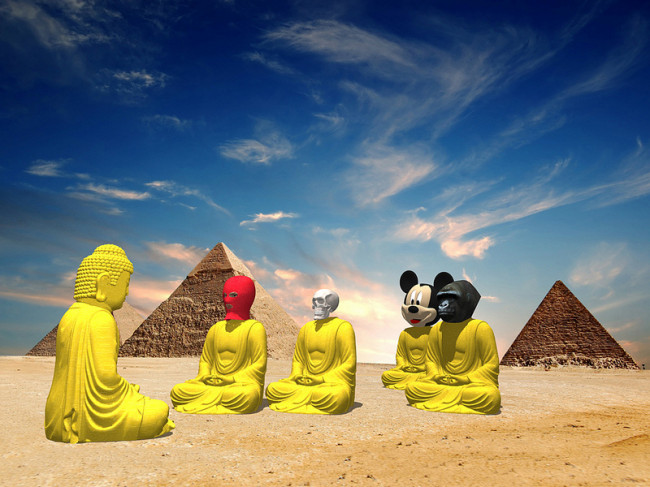
“ARTOMAT is a system for the automated production of art. Select an object, apply certain methods to it, combine it with another object, place it in an appropriate space, and your unique work is ready!
In our era, there are evermore products, both material and virtual, that are created entirely or to a large extent through automated processes. Art is the last bastion where one-off, unique products are made. What’s more, they are linked to the myth of the individual “internal world of the artist.” Nevertheless, if we closely observe the processes that have been underway in art in recent decades, we can see that behind the apparent variety in the works that are appearing lies a fairly limited selection of algorithms employed in their creation:
— taking something small and powerfully magnifying it;
— taking a single object and multiplying it;
— taking a large object and turning it upside down;
— building a recognizable object from “inappropriate,” paradoxical materials, or covering it in a strange pattern or colour;
— taking two or more objects from different, unconnected contexts and combining them;
— recombination — deconstruction with subsequent “inappropriate” assembly.
The ARTOMAT works by employing algorithms akin to those given above and generating art in an automated or semiautomated mode. The viewer becomes a user-artist, creating genuine works of art to suit his or her own taste. Hooked
up to a 2D or 3D printer, the ARTOMAT allows material objects to be created — pictures and sculptures. Thus, the entire production cycle for the creation of the work is automated, from conception to realization.”
ARTOMAT is a project by Aristarkh Chernyshev and Alexei Shulgin, 2013. See a gallery here.
It’s Not Art Till The Check Clears
(Post)Modem painting
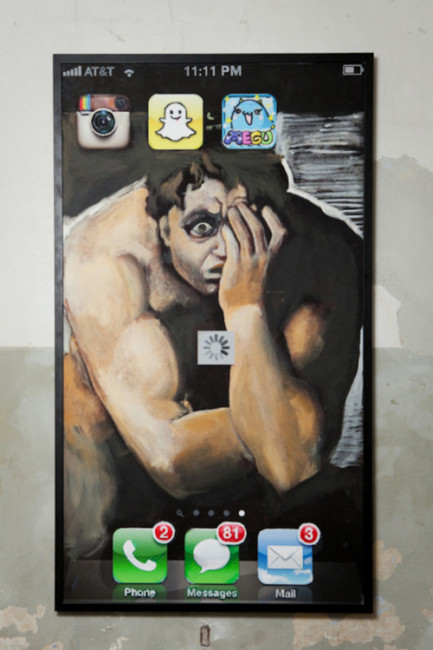
Paintings by New York-based artist Jeanette Hayes. More here and here.
Loading gallery

[found here]
Cube No. 3
FOMO: The Fear of Missing Out
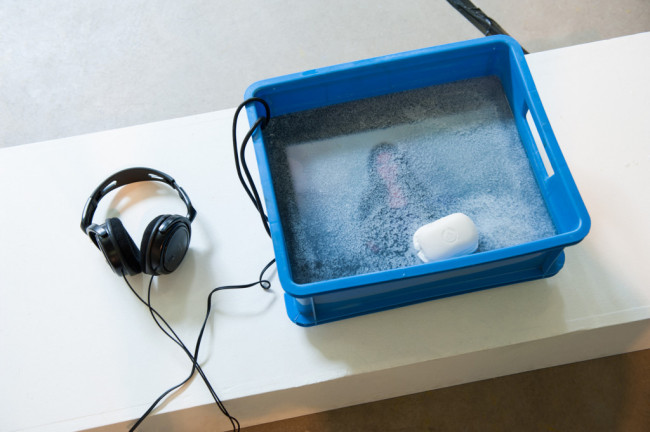
“The Fear Of Missing Out” is a project by Jonas Lund:
“The title derives from a social network induced anxiety condition. One brought on by trying to keep up with a rapidly moving world. A fear of constantly being one-step behind, in the wrong place, and missing out on the most exciting events. The Fear Of Missing Out proposes that it is possible to be one step ahead of the art world by using well-crafted algorithms and computational logic.
The works in the show are the result of a computer algorithm written by Lund. By analysing and categorizing a wide range of artworks, by the most successful contemporary artists, a set of instructions were generated explaining, step by step, how to make the most successful works of art. The artist then simply made the work following the instructions. In The Fear of Missing Out, important categories from the art world such as authenticity, artistry, talent, and creativity are questioned. The title also refers to the urge to be a part of a transparent information society made up of an overarching digital network.”
Failed memories
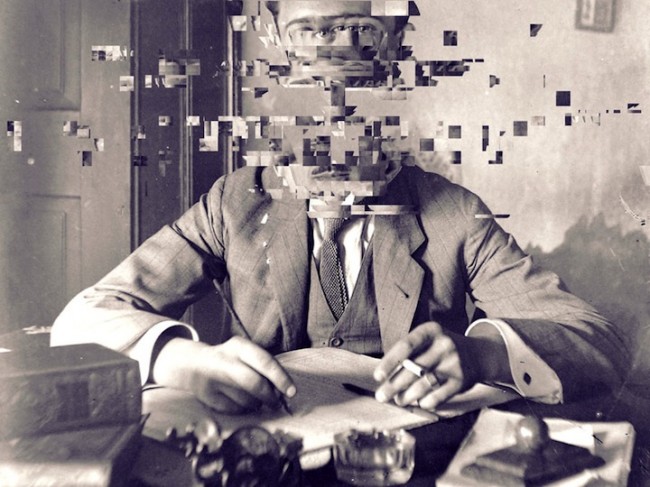
“Our brains store away images to retrieve them later, like files stored away on a hard drive. But when we go back and try to re-access those memories, we may find them to be corrupted in some way.”
Failed Memory, a photo series by David Szauder.
[via beautifuldecay]
Painting gifs
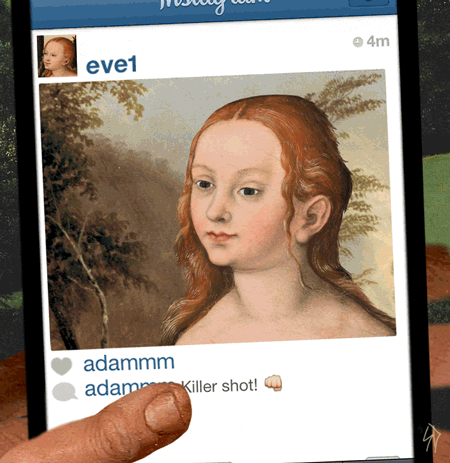
Digital collages made from northern and early renaissance paintings by Scorpion Dagger…
Portrait of the Artist as a Catalyst in a Capitalist Society

“Portrait of the Artist as a Catalyst in a Capitalist Society,” by Dick Preston, chart by Elfi.
The East Village Other, Vol. 3, No. 18 (April 5-11, 1969)
[via thethirdmind]
Edwardian Lolcats
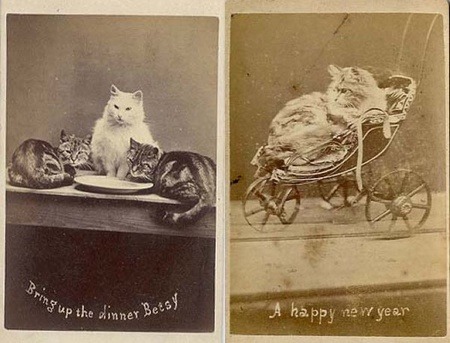
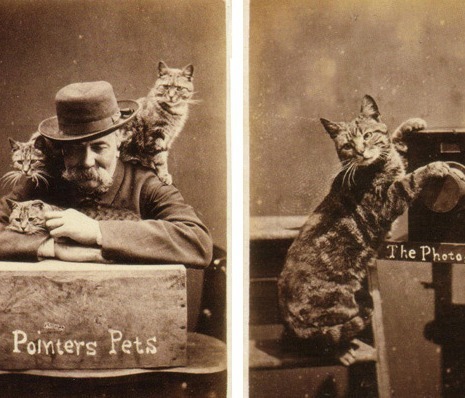
“Over a hundred years before Icanhascheezburger.com and lolcats.com, there was Brighton, England photographer Harry Pointer and his ‘Brighton cats’ series.”
[via dangerousminds]
Trembling
Real Internet Art unboxing
Constant Dullaart unboxing the Real Internet Art project by Fabien Mousse…
